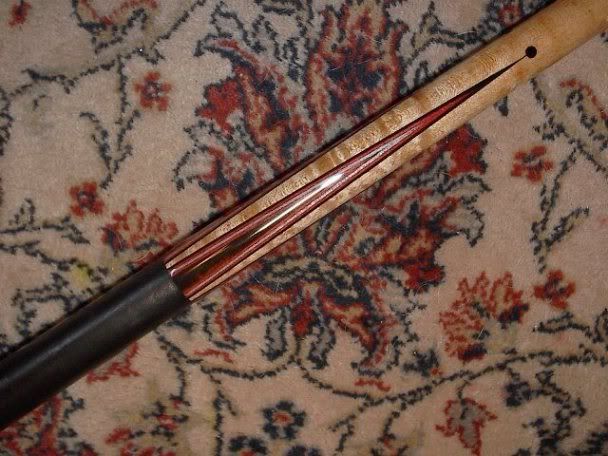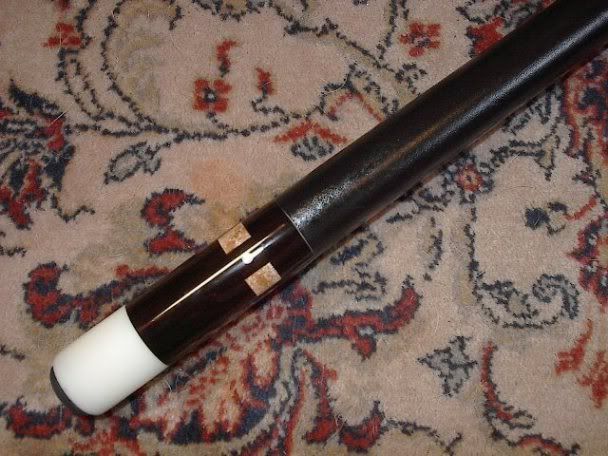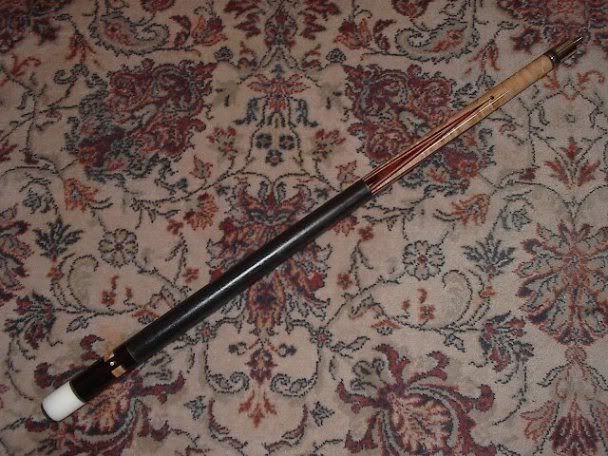dave sutton
Banned
Sure...









You have to take a step back and listen to what you are saying. If you remover the collars and put the on new shafts you have not preserved any originality, they are still new shafts and no longer original. If your intent is to preserve the Scruggs originality and value just get new shafts so you can play with the cue and put the old shafts away for safe keeping. I have sold a lot of collectible cues and the new owners are always happy to get the original shafts no matter what their condition. You then have the new shafts and old shafts as one big package representing the greatest overall value. Plus, the collars are not that hard to duplicate for the new shafts.I just picked up 2 very early Scruggs cues, without the TS logos so 1978-1980.
The shafts have significant warpage and I want to have the collars taken off the shafts and used on new shafts.
Is this something that can be done? Also can the original brass female threaded inserts be reused in the new shafts?
The butt of the cues will need refinishing as well, but should turn out pretty nicely. Just can't lose these early Scruggs collars and recreating them would be impossible.
Thanks in advance
Here photos:
You have to take a step back and listen to what you are saying. If you remover the collars and put the on new shafts you have not preserved any originality, they are still new shafts and no longer original. If your intent is to preserve the Scruggs originality and value just get new shafts so you can play with the cue and put the old shafts away for safe keeping. I have sold a lot of collectible cues and the new owners are always happy to get the original shafts no matter what their condition. You then have the new shafts and old shafts as one big package representing the greatest overall value. Plus, the collars are not that hard to duplicate for the new shafts.
they look to be in excellent original condition. i wouldnt get then refinished. spend 250 and get 2 new shafts and enjoy your cues. if someone car reproduce the ringwork better yet if not pop the rings and get 2 new shafts and play
I love the red one. It is very hard to find but some people have it. I do. But the problem with the red is it will never match. It is dark til you cut it then it changes color then gets dark again over time. Unless they pieces are cut at the same time from the same piece it will never match.
I love the red one. It is very hard to find but some people have it. I do. But the problem with the red is it will never match. It is dark til you cut it then it changes color then gets dark again over time. Unless they pieces are cut at the same time from the same piece it will never match.
Hi there I have a red one like the one shown here. I was wandering if there was a way to confirm that this is a prelogo 1978-79 Tim Scruggs cue. It has The same Cortland wrap as well as 5/16x18 pin. Everyone I talk to has told me that he only used 5/16x14 pin. Is there anyone who I can talk to that can help me identify this cue. I have posted lots of pictures on the main forum. Under "vintage unknown cue please help" thank you for reading this post
Dickie's method is described in a couple of different threads. I've saved the information in my log:
Salvaging old ringwork from a warped shaft
*good thread*
I seldom try to save deco-rings unless they are real odd and hard to build but if I must I do it very differently than what has been described so far. The way I do them you don't need to worry about getting the ring nor insert being concentric with the pin in the butt which is not necessarily always exactly centered. I put a small 60 deg bevel on the insert for a center and then with the shaft extended about four inches between the chuck and the 60 deg live center, I turn down the shaft to around .600 for two inches in front of the deco ring. I then cut this tenon and deco-ring off of the old shaft and screw onto the butt that I have now mounted into the lathe. I then glue this tenon into a new shaft that I have bored to .600 and center the ferrule in the tail stocks center insuring that the new shaft is perfectly straight with the butt. This makes the new shaft completely concentric with the cue as nothing has changed. The new shaft screws on to exactly the same as the original because it is the original. I make my last pass, bringing shaft to final size on the new shaft after all the deco-ring work is finished.
Dick
Pasted from http://forums.azbilliards.com/showthread.php?t=114776
Or
I usually make new rings but if they are oddball then what I often do is as follows:
1. I bore out the new shaft blank to approximately .525 to .550 2" deep.
2. I then chuck up the but in my lathe with the joint about 1" out of the
chuck and I put on the old shaft.
3. I then cut the shaft off a little longer than 2" from the bottom of the
deco-ring.
4. I then turn this stub down to the same size as the hole that I bored
into the new shaft blank, trim to length and glue the new shaft onto
this stub with the far end of the shaft centered in the tail-stock.
5. I then finish the shaft up in my normal way.
In doing it this way the same deco-ring and insert is used and they are still oriented to the butt the same way as the old shaft was. Now the deco-ring fits perfectly even if the pin is not exactly centered.
Dick
Pasted from http://forums.azbilliards.com/showthread.php?t=28342